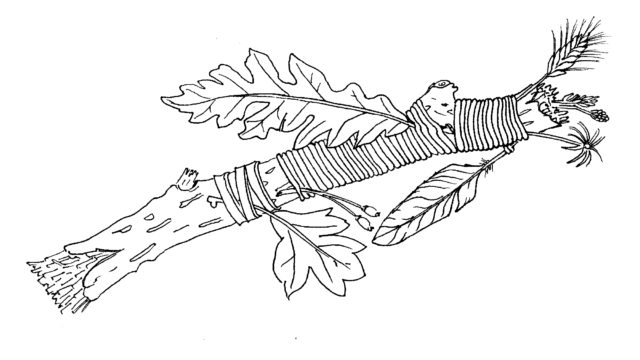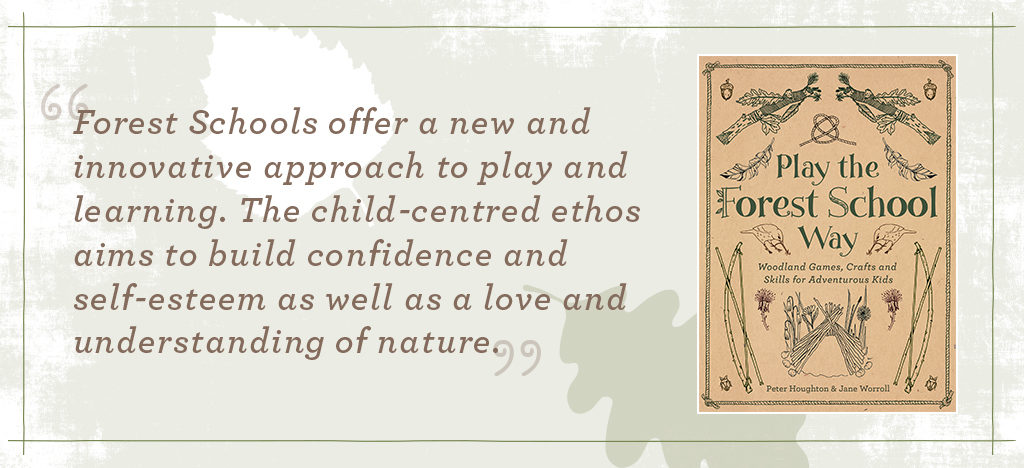
So why has our society become so disconnected from nature? Along with strangers, increasing traffic and other hazards of the modern world, nature itself is often seen as something alien, a threat to our children. Changes in the way we live, including a rise in risk-adverse parenting, as well as an increasing dependence on technology, contribute to an ever-more sedentary, indoor culture that counts increasing childhood obesity as only one of its negative impacts. While some of these concerns are valid, it’s important to try to readdress these issues.
Forest School is an increasingly popular grassroots movement that aims to connect children with nature once more. It developed in the UK in the 1990s as both an approach to early years learning, inspired by the play-based, nature-centred pedagogy of Scandinavia, and as an ever-growing collection of individual Forest Schools, such as educational play schemes in local parks and schools. Forest School leaders offer a whole range of brilliant games and activities for use in woodland settings, aimed at different age groups. The two described very briefly here are suitable for younger children; older children will be excited by shelter building, fire-making, bows and arrows and much more. All Forest School activities are designed to be child-led but supervised by an adult.
Acorn hide and-seek
Squirrels collect food in autumn to eat in the winter months when supplies are scarce. Wary of rivals, who may steal their stash, they roam far and wide to bury their hoards and have even been known to fool potential thieves by making dummy caches containing no acorns at all. When the squirrels return months later, they rely on their memory and keen senses to sniff out the hoards buried underground! This game for age 3+ is a chance to see the world through a squirrel’s eyes, and requires focus, memory and self-control as the children hide and then discover their acorn treasure.
Acorn hide and-seek
Squirrels collect food in autumn to eat in the winter months when supplies are scarce. Wary of rivals, who may steal their stash, they roam far and wide to bury their hoards and have even been known to fool potential thieves by making dummy caches containing no acorns at all. When the squirrels return months later, they rely on their memory and keen senses to sniff out the hoards buried underground! This game for age 3+ is a chance to see the world through a squirrel’s eyes, and requires focus, memory and self-control as the children hide and then discover their acorn treasure.
Get set
Gather your acorns, then look around for hiding places. Make sure that no one else sees where you stash them. Look for details that might help you find your hiding place again – it might be behind or under a rock, in a tree hole or near a fallen log. Go for a short walk, then head back to where those tasty acorns were hidden.
Go!
Now find your acorns! Are they still there? Can the squirrels discover them all? Offer hints and praise, particularly if anyone is struggling, but let the squirrels find their stash themselves.
Get set
Gather your acorns, then look around for hiding places. Make sure that no one else sees where you stash them. Look for details that might help you find your hiding place again – it might be behind or under a rock, in a tree hole or near a fallen log. Go for a short walk, then head back to where those tasty acorns were hidden.
Go!
Now find your acorns! Are they still there? Can the squirrels discover them all? Offer hints and praise, particularly if anyone is struggling, but let the squirrels find their stash themselves.
The journey stick
 Every journey stick is as unique as a child’s experience of that journey. Let the sticks evolve naturally and prepare to be amazed! Tradition says the Aboriginal people of Australia once created journey sticks to record their travels and help them retell their stories to others. This activity allows children to use leaves, feathers, seedheads, pieces of string and other objects to record personal memories of a journey. It encourages them to be creative and imaginative and to be truly present in a natural setting; to tell their stories and to listen to others.
Every journey stick is as unique as a child’s experience of that journey. Let the sticks evolve naturally and prepare to be amazed! Tradition says the Aboriginal people of Australia once created journey sticks to record their travels and help them retell their stories to others. This activity allows children to use leaves, feathers, seedheads, pieces of string and other objects to record personal memories of a journey. It encourages them to be creative and imaginative and to be truly present in a natural setting; to tell their stories and to listen to others.
Get set
Tell the children they’re going to be gathering natural objects and other things they like on their journey, to become part of their sticks. As they are walking, they can think about the sounds they hear, any feelings and thoughts, the landscapes, trees and animals that catch their attention, the smells, the route they are following. The things they collect will help them recall these experiences. Before you start, let them choose handfuls of coloured string to tie on objects and help with remembering different experiences. Remind everyone to avoid picking rare or poisonous plants, or dangerous items such as broken glass.
Go!
Head out on your journey! Put the first thing found at the top of the stick to represent the beginning and the last thing found near the middle or bottom of the stick. This will help later when you gather to retell the story of each journey.
For more info and activities in the Forest School ethos, buy Play the Forest School Way: Woodland Games, Crafts and Skills for Adventurous Kids by Peter Houghton & Jane Worroll. With thanks to Peter and Jane for the content in this blog (taken from their book). Pete, a qualified Level 3 Forest School leader, and Jane, an ecology and environmental conservation expert, run year-round Forest School sessions for children all over the country.
To view our current outdoor catalogue online please use the link below:
View our online Outdoor catalogue




